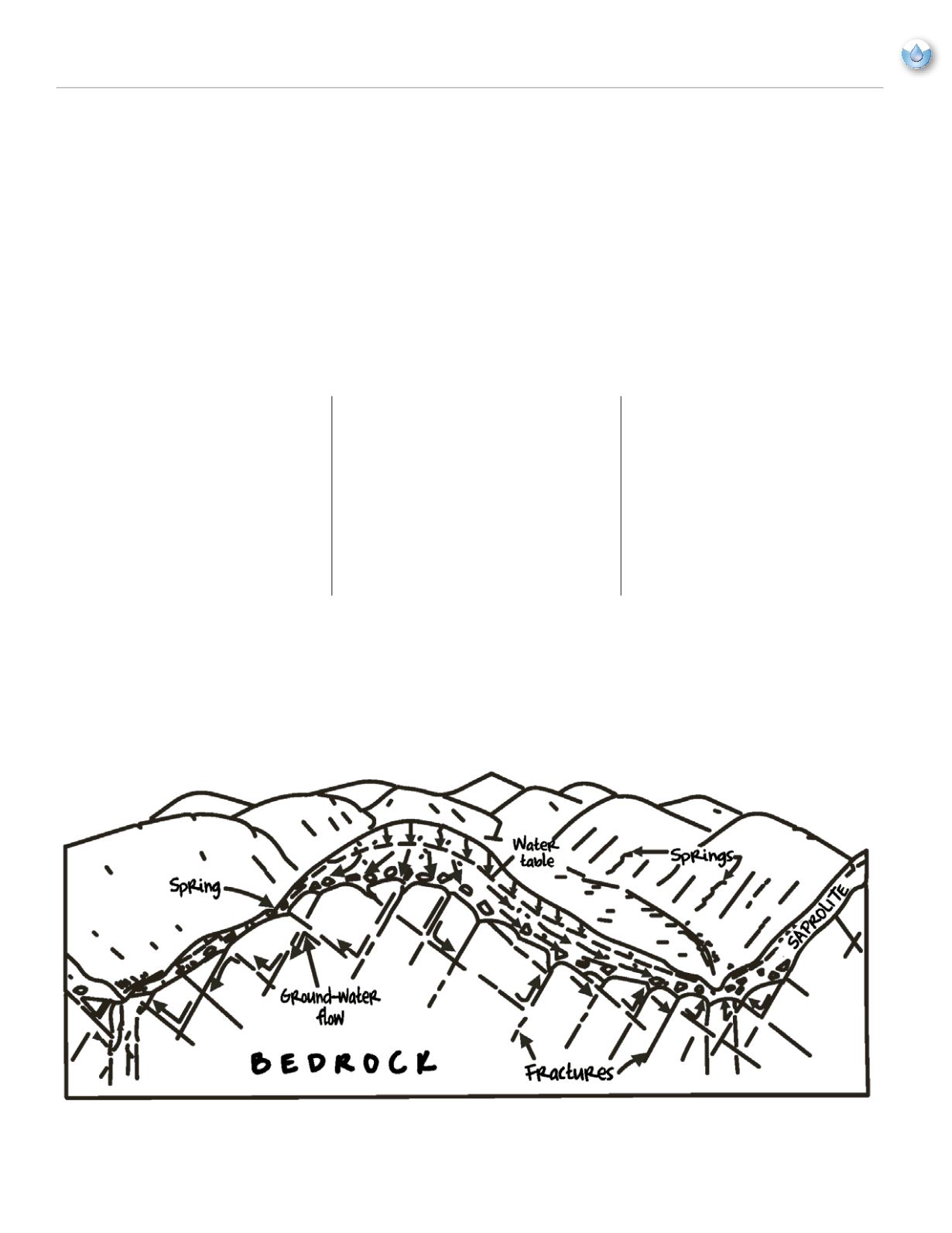
A
lmost anywhere in the Piedmont or
Mountains, you will see houses perched
on the high elevations and hilltops. This
provides a great view, and makes the land
more valuable. It also makes work, and
money, for well drillers. You see, the hill
is there because it is supported by erosion-
resistant hard rock. The skeletal rocks that
support the hill have few fractures and
cracks, and this is why the hill is where
it is. Fissures, cracks, and joints in the
bedrock allow water to enter the bore of
a well, and the more fractured the rock
is, the greater the likelihood of a higher
yielding water supply well. Figure 1 shows
an idealized cross-section of a typical hill
in the Mountains or Piedmont.
Further down slope from the erosion-
resistant hilltop you will find more and
more fractures and cracks, which is
the reason the valleys are where they
are. Valleys were carved by headward
weathering and erosion by streams into
the more easily worked areas found in the
lower elevations because the underlying
bedrock is more cracked up. This is a better
Drill a well on the top of the hill?
Why not?
Figure 1.
Groundwater Situation in the Piedmont and Mountains of North Carolina
By Keith Starner, P.G. (your geological connection)
Fall 2013 |
NCRWA.COM
19
feature
Ground-Water Situation in the Piedmont and Mountains


